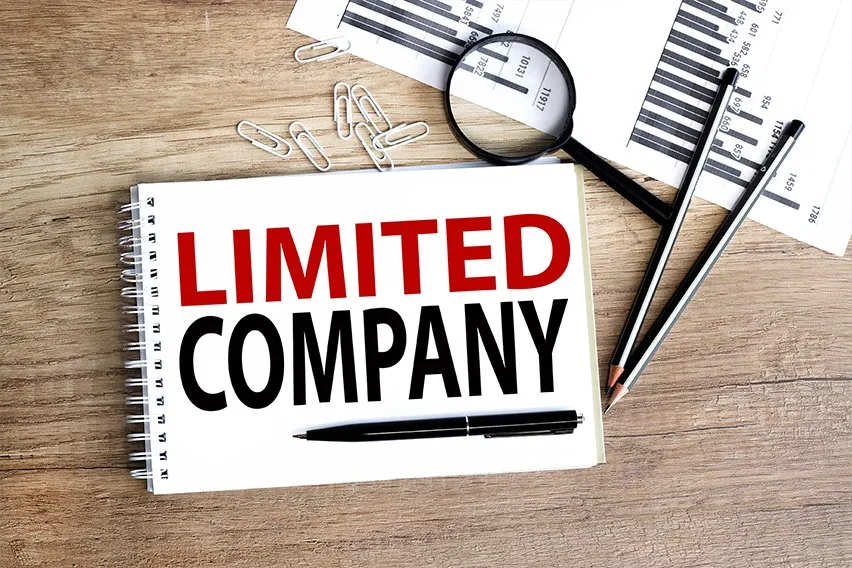Cost-Benefit Analysis: An Extensive Guide

Cost-Benefit Analysis is a method of decision making in business and economics. You can use it to analyse the outcome of taking one action, or compare different actions.
If you’re considering questions like these, it’s one way to make the choice more concrete:
- Should I hire more people to support existing employees with the increased workload?
- Can we afford to open another premises? Can we afford not to?
- Should I take the business in a different direction?
Essentially, a Cost-Benefit Analysis is a way to analyse potential actions in your business to help you answer the broader questions:
- Is this worth the risk?
- Is it financially feasible?
- Which of these is the best option?
This method is particularly useful for evaluating small to medium sized projects that have a limited time frame.
Here’s What We’ll Cover:
What Is Cost-Benefit Analysis?
What Are the Pros and Cons of Using Cost-Benefit Analysis?
What Is Cost-Benefit Analysis?
Unlike other accounting formulas, Cost-Benefit Analysis is more of a process than an equation. Basically, you’re weighing up the costs and benefits of doing something to see which is a better outcome. The specifics depend on the specifics of your business and the actions you’re evaluating.
What’s interesting, and what makes this analysis particularly useful, is what you include in your lists of costs and benefits.

Cost-Benefit Analysis Process
Step 1: Get Specific
What exactly are you trying to decide? Open-ended questions like ‘What should I spend this £50,000 on?’ aren’t helpful. They’re too broad to be able to use a Cost-Benefit Analysis.
You need to be more precise in the options you’re trying to compare. For example, you’ve got £50,000 to invest in the business. Your options are; R&D for a brand new product, extending manufacturing capability to increase production of current products or, leave it in the bank.
A cost-benefit analysis of each scenario is extremely helpful in this decision-making process. It’ll help you consider all the costs and benefits of each option and give you actual data on which to base your final decision.
Step 2: Identify All Relevant Costs and Benefits
The costs you should include can be organised into 5 different cost categories. Each cost must be assigned a monetary value.
Direct costs
These are the most easily identifiable potential costs of any project. Things like raw materials, manufacturing costs, maintenance costs and payroll.
Indirect costs
Indirect costs can be slightly more difficult to quantify on a per-project basis. They include things like utilities, property rent and other overheads.
Intangibles
Now this can be tricky to quantify into pounds sterling. Intangible costs are things like the impact on people – employees and clients.
Opportunity cost
It can be helpful to think of this by asking ‘how much will this cost if we don’t do it?’ It’s the price of a missed opportunity. Sometimes called the ‘foregone option’, this is particularly potent when considering multiple options.
As these opportunity costs are, by definition, invisible, it requires some deep thinking to unearth yours. This type of cost isn’t shown on your financial statements, but should be part of any thorough decision making in your business.
Risks
The risks that accompany any business action usually have their own additional costs. This might be things like regulatory or legislative requirements, environmental consequences, competition and project failure.
You should also calculate the cost of simply not doing the project. So, how much your money will make in interest if it simply sits in your business bank account or investment product.
Now you need to turn your attention to all the potential benefits of your choices. Including things like:
- Increased sales
- Higher revenue that grows over time
- Getting a higher market share
- Gaining a competitive advantage
And the intangibles – not a new superhero team – but the benefits that are more difficult to quantify, like:
- Impact on brand
- Effect on employee safety and/or morale
- Increased customer satisfaction and loyalty
Step 3: Assign £ Values
Now you’ve identified all the possible costs and benefits, you need to assign them a monetary value. A common mistake at this stage is to underestimate costs and overestimate benefits. It’s best to err on the side of caution with both.
Giving items a monetary value isn’t always straightforward. You’re not just considering the costs of present-day things, but looking ahead to include costs that happen in the future years of a project. You also need to incorporate the fact that some costs change during the lifespan of the project. Converting future costs into their present value should be part of these calculations – adding another layer of necessary complication.
Paying attention to the details during this step gives you a much more in-depth, accurate measure of your position.
Step 4: What Are the Numbers Telling You?
Once you’ve given each item a monetary value, add up the total costs and benefits on your lists. At this stage, if the costs are considerably more than the benefits, then this probably isn’t a good option. If the benefits are higher than the costs, this indicates that it’s a good decision and the project should go ahead.
This is called the Benefit-Cost Ratio. As a formula, it looks like this:
Total value of benefits / total value of costs = benefit – cost ratio
What do the cost-benefit ratio results mean?
- A ratio higher than 1 = better to do this project than nothing
- A ratio less than 1 = the costs are higher than the benefits, so this is probably unwise
- A ratio of 1 = might be better to do nothing, just put the money in the bank to earn interest
If you’re comparing 2 or more projects, the one with the highest ratio wins. It’s the one that this formula is suggesting will give you the best return on your investment.
Payback Period
The payback period is how long it’ll take for the benefits to pay back the costs. You can turn the Benefit-Cost Ratio around to work this out.
Payback period = total costs / total benefits
What Is a Sensitivity Test?
A Sensitivity Test is a way of adjusting your cost-benefit ratio to account for the subjectivity of your figures. For example, re-run the numbers, increasing your costs and decreasing your benefits by 10%. This could be to account for a potential 10% increase in the cost of raw materials for your proposed new product.
Doing a sensitivity test gives you a sense of how safe your first number is, by adding increased risk to the formula. You can try out a more conservative approach to see how it affects the overall picture. And it may tip the Cost-Benefit Ratio below 1. Then it’s up to you to decide how much risk you’re prepared to take with this project.

What Are the Pros and Cons of Using Cost-Benefit Analysis?
Cost-Benefit Analysis: Pros
There are several advantages to using Cost-Benefit Analysis for your business decisions. Firstly, it puts emotion to one side. Giving everything a monetary value and looking at the situation in purely numerical form offers more clarity. Internal politics, personal opinions and driving passions are not involved. You produce clear mathematical facts which can be compared and evaluated calmly.
Another often unexpected advantage to doing a cost-benefit analysis is actually finding costs you can reduce. Focusing on a potential action in such detail leads to discoveries that may never have seen the light of day otherwise. Sometimes this is a hidden cost you were unaware of, but this often comes hand-in-hand with the way to reduce it. And there’s always the potential for digging up a previously unknown benefit.
Very few business decisions are as straightforward as they first appear. You have to consider every potential impact and consequence of each one. Sometimes this is so overwhelming that the path of least resistance seems more appealing, and the status quo continues. Choosing to use Cost-Benefit Analysis is a way to simplify. Everything is reduced to the data. Two summarised pieces of data – costs versus benefits. And all you have to do is compare them. This doesn’t mean you’re ignoring the complexities. But you’re giving yourself a framework in which you can consider your options clearly. And it’s only one of many accounting methods you can use to maximise your knowledge-base and mitigate your risks.
Cost-Benefit Analysis: Cons
One of the limitations of Cost-Benefit Analysis is that most of the numbers in the calculation are predictions – not absolute facts. This means that there’s an element of estimation built into the calculation.
Closely connected to this is that the usefulness of a Cost-Benefit Analysis is dependent on the quality of your overall data. If you’re working with incorrect figures, or some of your information is missing, then the conclusions you draw from your analysis won’t be very accurate.
You can’t account for the unexpected. No matter how tight your future predictions are, you can’t account for all external influences – like a stock market crash, new tech or a global pandemic.
A Cost-Benefit Analysis isn’t very useful for large, complex projects that have a longer-term deadline. The further into the future you plan, the less accurate your analysis. And it can’t possibly account for all the usual other elements that affect your overall financial position, like interest rates, inflation and the present value of money. So this method is much better for evaluating small and medium sized projects with a shorter time frame.
Taking emotion out of the decision is one of the positives of Cost-Benefit Analysis, for sure. But it’s also a negative. Profit isn’t the only reason people make the business decisions they do. And there’s no place for that in this kind of evaluation. It’s useful, but shouldn’t take precedence over your passions, morals or other reasons for making business decisions.
Cost-Benefit Analysis is only one way of evaluating your business decisions. As with all accounting methods and formulas, it’s important to use them to get as many different perspectives on your business as possible.
RELATED ARTICLES

 What Is Asset Management? Definition & Importance
What Is Asset Management? Definition & Importance WACC Formula, Calculations & Definition
WACC Formula, Calculations & Definition How to Cancel a Direct Debit: Everything You Need To Know
How to Cancel a Direct Debit: Everything You Need To Know What Is Debt-to-Equity-Ratio & How to Calculate It?
What Is Debt-to-Equity-Ratio & How to Calculate It? What Is Per Diem? Everything You Need to Know
What Is Per Diem? Everything You Need to Know What Is a Limited Company and How to Set One Up in the UK
What Is a Limited Company and How to Set One Up in the UK